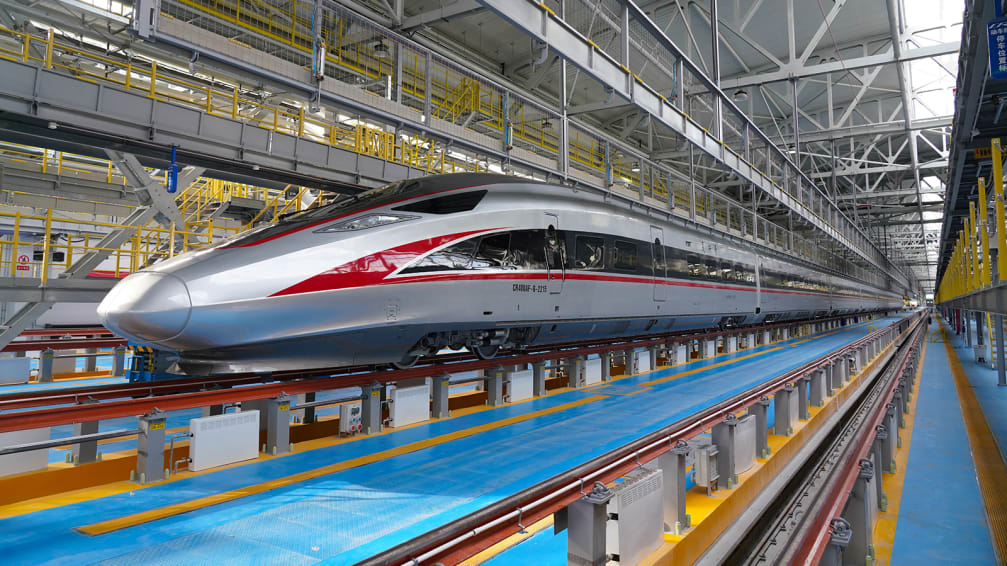The so-called “doomsday” trains are said to be part of China’s preparations for a future new military strategy. Engineers analysed the logistics of transporting Beijing’s elite DF-41 nuclear-capable missile trains, according to a government-funded report published yesterday. According to reports, the scary rockets weigh over 80 tonnes.
They are also reported to be capable of transporting nuclear bombs up to 9,300 kilometres away from the launchpad.
The developers argued that putting these missiles on trains would allow them to be more discrete.
This is because rail-based launches are more difficult to detect because the guns are continually moving.
This strategy may also improve launch efficiency by allowing any rail damage caused by enemy hits to be repaired rapidly.
This follows China’s 2015 test of a mobile DF-41 from a train.
However, there is no current indication that China has built a rail-based launch platform.
“Compared to heavy-haul trains, high-speed railways function faster and more smoothly,” the researchers stated in the Journal of Southwest Jiaotong University.
“This means that military vehicles would have increased mobility, safety, and camouflage on high-speed tracks.”
Prof Yin Zihong, the study’s leader and the head of the Chinese government’s national research project, believes that an intercontinental ballistic missile (ICBM) may be launched within a vehicle.
He claimed that the weight of the ICBMs would provide thrust equal to two to four times the train’s maximum loading capacity.
It is understood that the DF-41 missiles have the longest range of any nuclear missile in the world.
According to the experts, China’s construction of a vast high-speed rail network has provided “favourable conditions” for the missiles to be launched from.
In fact, one of China’s most recent prototypes is predicted to exceed 620kph (380mph).
China’s Maglev train technology is a 21-metre-long (69-foot) prototype powered by high-temperature superconducting (HTS).
The train might be “operational” between 3 to 10 years, according to Prof He Chuan, vice president of Southwest Jiaotong University.




















